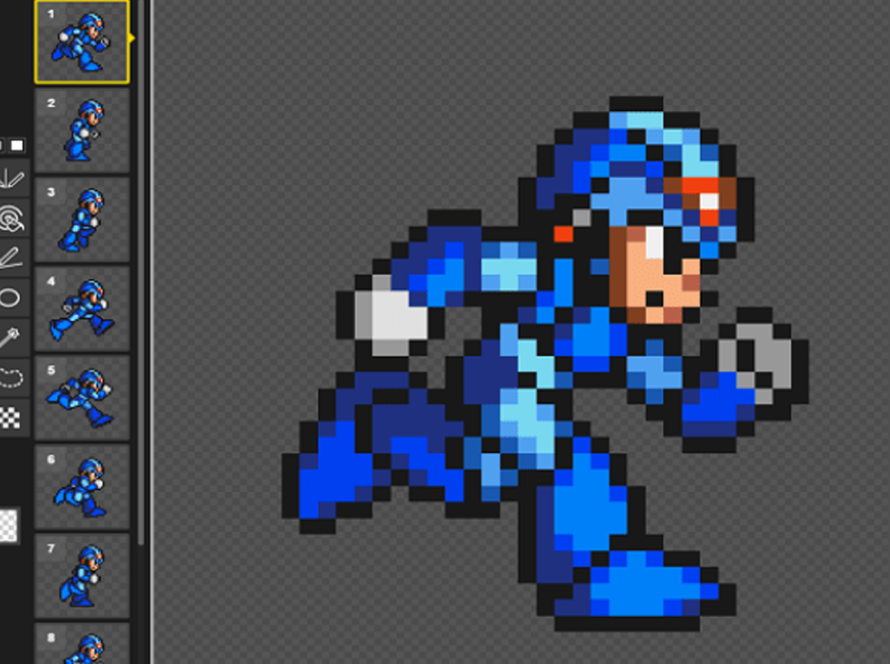2D game background design plays a vital role in creating an immersive and engaging gaming experience. From mystical forests to futuristic cities, game backgrounds are more than just a backdrop; they are also an element that helps shape the atmosphere and story of the game. This article will take you on a journey through popular 2D game background designs, from classic styles to modern trends
What is 2d game background design?
2D game background design is the process of creating flat, two-dimensional images to set the scene, convey atmosphere, and support level design. Backgrounds are more than just a backdrop; they are also part of the user interface and affect the player experience. Background assets, such as backgrounds and environmental elements, are organized into layers to create parallax and motion effects, adding depth. A good background should match the art style, support gameplay, and provide a visually interesting experience. Choosing colors, textures, and lighting effects also play an important role in creating the right atmosphere
The different types of 2d game background designs
Popular types of background designs today:
Design With Gradient & Flat Colors
A popular type of 2D game background is to use a solid color or gradient background. This is an effective choice for games that have a simple design style or want to focus the player’s attention on other elements. 7SwordGames and other developers often apply this type of background to hyper-casual games, as it helps reduce production costs and provides a quick and easy gaming experience. Although simple, the choice of color and the use of gradients also need to be carefully considered to match the overall tone of the game and create the desired visual effect.
Design With Patterns
Patterned backgrounds are often used in 2D games as a means of creating backgrounds and telling stories. These repeating patterns can be simple drawings, abstract graphics, or silhouettes of game objects, each with their own meaning. In some cases, the repeating patterns are designed to move slowly, adding an element of mystery and interest. To design effective patterned backgrounds, you need to explore the core spirit of the game, using the shapes of objects that represent the game world to strengthen the connection between the background and the story the game wants to convey.
Environmental Game Background Design
In 2D game environment design, one factor to consider is the purpose of the background. The background can be integrated into the level design, becoming part of the gameplay, or simply a decorative background. In the latter case, as the game “Bubble Witch Saga” illustrates, the background is purely aesthetic, creating a visual scene but not interacting with the gameplay mechanics.
This is especially important in games like “Bubble Witch Saga” or Pixie’s pixel art games, where gameplay clarity is a top priority. Pixie cleverly uses a blur effect on the background to separate it from the main gameplay elements, ensuring that the player is not distracted by non-interactive elements. This contrast makes it easy for the player to focus on the game’s interactions and challenges.
Design With Skybox
Skybox is an important technique in 2D game background design, helping to create a sense of vast and open space, usually the sky. Instead of flat images, the Skybox is a cube that surrounds the game screen, with images projected onto the inner surface. The player is always at the center, and the Skybox moves with them, creating a sense of distance and endless space. No matter how the player moves, the Skybox maintains the feeling of being far away, helping to create a more realistic and immersive gaming experience. Skyboxes can be used to create the entire scene or just a part of it, depending on the design needs
Techniques for making backgrounds for 2d games
Blur the unnecessary
In cases where the background is only intended to create space and atmosphere, it is important to blur or darken it. The purpose of this is to create visual hierarchy, ensuring that important gameplay elements, such as characters, interactive objects, or UI, are always prioritized and easily recognizable. A background that is too prominent can be confusing and difficult for players, affecting the overall experience. Therefore, adjusting the opacity and darkness is a 2D background design technique that cannot be ignored.
Parallax layers
To enhance the immersion and depth of the 2D game world, designers often use parallax scrolling in side-scrolling or top-down games. By dividing the background into different layers and assigning a separate movement speed to each layer, the parallax scrolling effect is created naturally. The background layers will drift slowly, while the foreground layers will move faster, giving players a clear sense of distance and creating an impressive 3D visual effect
Play With Hue
When creating a 2D game background with flat or gradient colors, experimenting with color is an indispensable step. Experiment with different shades, from warm to cool tones, from light to dark, and see how they affect the player experience. Don’t hesitate to experiment with different colors and explore the unexpected possibilities of 2D game backgrounds.
Add particles
One way to add realism and life to a 2D game background is to integrate particle systems and visual effects (VFX). These can be used to create effects such as falling snow, fire, or special lighting effects. However, you need to use these effects wisely. Using too many or too complex VFX can overload the graphics card, leading to lag in the game, affecting overall performance and reducing the player experience.
FAQs
How can you create a sense of depth and perspective in a 2D background?
Creating depth in 2D backgrounds relies heavily on layering techniques, where foreground, midground, and background elements are strategically placed. Parallax scrolling, where layers move at different speeds, enhances the illusion of depth. Furthermore, using atmospheric perspective, such as fading colors and reducing detail in the background, helps simulate distance. Finally, strategic use of scale, with closer objects appearing larger, also plays a crucial role in establishing perspective.
How do you adapt background designs for different screen sizes and aspect ratios?
Adapting 2D game background designs involves utilizing techniques like responsive scaling and tiling to accommodate various screen dimensions. Employing anchor points and flexible layouts ensures that key elements remain visible and are not cropped or distorted. Utilizing parallax layers effectively can also create a sense of depth and immersion, regardless of the aspect ratio. Finally, careful planning and testing on different devices are essential to maintain visual integrity and avoid issues like stretching or unwanted repetition.
How can different color palettes and shading affect the style of a 2D background?
Different color palettes and shading techniques profoundly impact the style of a 2D background. A vibrant, high-saturation palette with bold, cel-shading can create a cartoonish or stylized feel. Conversely, muted colors with soft gradients and detailed lighting can achieve a more realistic or atmospheric look. The careful selection of hues, tones, and shading styles directly influences the perceived mood, depth, and overall aesthetic of the 2D game environment.
Conclusion
Through this article, we have reviewed the most popular types of 2D game background designs. Each type of background has its own advantages, suitable for different game genres and art styles. From simple, minimalist backgrounds to complex, detailed backgrounds, the choice of background type depends on the design goals and requirements of the game.




